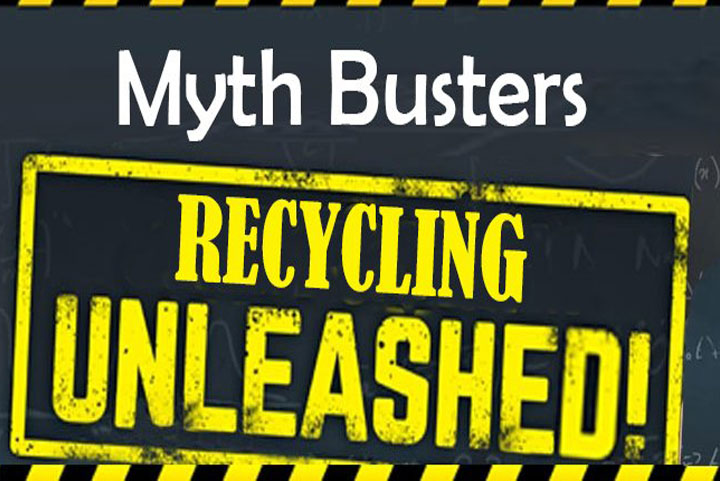So exactly how hard is it to recycle, anyway? And can recycling make a difference for our business? Is it true industrial and manufacturing companies can’t bring in revenue with recycling? What?!? Even today, after decades of recycling services, we’re often baffled by myths and half-truths that get passed around.
The Truth Is Really Simple
We want to keep it simple: Recycling is the effective removal and recycling of large amounts of materials while potentially generating revenue for bigger industrial manufacturing companies and smaller businesses alike. That’s it.
In this spirit of “keeping it simple,” we’ve collected facts and insights that may just encourage your organization to get with the program—the recycling program, that is!
Myth: Recycling costs too much.
Fact:
- Well-run recycling programs cost less than landfills and incinerators.
- The more you recycle, the more affordable it gets.
- Depending on the material, recycling potentially generates revenue. Incineration and landfilling definitely do not, regardless of the material.
- As a community service effort, your business can be part of the U.S. saving enough energy to provide electricity for 9 million homes per year through recycling.
Myth: Recycling makes no difference.
Fact:
- Recycling’s true value comes from preventing pollution and saving natural resources and energy, not landfill space, with recycling being largely responsible for averting the landfill crisis. Most states have less than 20 years of landfill capacity.
- Every ton of paper recycled saves more than 3.3 cubic yards of landfill space.
- Total paper recovery in the U.S. exceeded 51 million tons in 2014, and more than twice as much paper is recycled than is sent to landfills.
- Recycling a stack of newspaper just 3 feet high saves one tree.
- Five plastic bottles (PET) recycled provides enough fiber to create one square feet of carpet or enough fiber fill to fill one ski jacket.
- Recycling one ton of plastic bottles saves the equivalent energy usage of a two-person household for one year.
- Recycling just one glass jar saves enough electricity to light an 11 watt CFL bulb for 20 hours. And glass can be recycled and re-manufactured an infinite amount of times and never wear out.
- Making glass from recycled material cuts related water pollution by 50%.
- It takes 95% less energy to recycle aluminum than it does to make it from raw materials. Making recycled steel saves 60%, recycled newspaper 40%, recycled plastics 70%, and recycled glass 40%.
- Recycling saves 3.6 times the amount of energy generated by incineration and 11 times the amount generated by methane recovery at a landfill.
- Using scrap steel instead of virgin ore to make new steel takes 40% less water and creates 97% less mining waste.
Myth: There are no markets for recyclables.
Fact:
- Because recyclable materials are commodities, they do have different values. If the value drops, some items will have negative values, i.e., you will have to pay for the material to be picked up. However, the market can change at any time.
- Prices fluctuate as they do for any commodity, but domestic and international markets exist for many materials collected in recycling programs. Check with Texas Recycling to see what materials we are buying currently.
- Demand for recycled materials is on-going. American manufacturers rely on recyclables to produce many of the products on your store shelves.
- The value of materials collected for recycling is estimated to be more than $5 billion per year.
- All new steel products contain recycled steel.
- Over 1,400 products and 310 manufacturers use post-consumer plastics.
Simply put, at the end of every work day, we leave feeling good that we have contributed to our communities and helped our industrial, manufacturing and commercial clients in earning money for their recyclables instead of paying for removal. If you’re searching for ‘scrap yards near me’, Consider ramping up your recycling efforts and stop by our Public Buy Back Center at Texas Recycling with your truck loads. We’re ready to help.
Article sources include:

